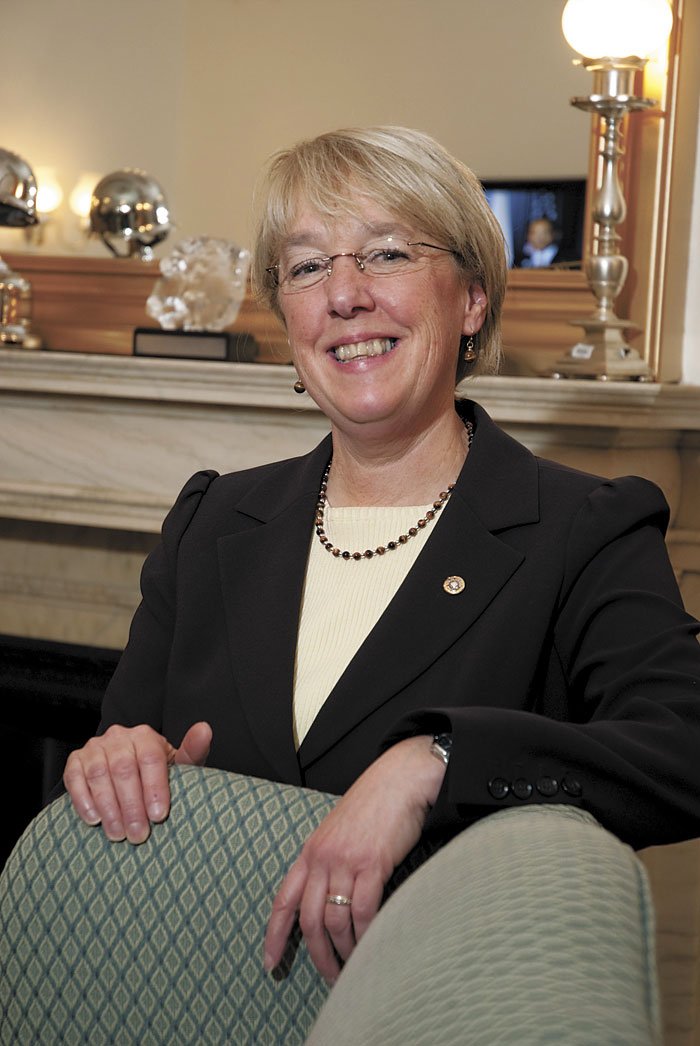When it comes to trees and sidewalks, it’s often a matter of when, not if, they can no longer cohabitate. “In so many situations, trees have been planted in so narrow of a spot that it was a disaster from the beginning,” says Liz Ellis, an associate civil engineering specialist with the city Department of Transportation. “This was designed to fail. But will it fail in 20, 30, 40 years? How long do we push those limits before we compromise public access and safety?”
Ellis, who prefers to be called the “sidewalk fix-it lady,” is managing the city’s quest to repair and replace 288,000 square feet of sidewalk by the end of 2013. The effort is the result of the city’s “Bridging the Gap” transportation levy, approved by voters in 2006. Last year, the city repaired and replaced 28,146 square feet of sidewalks, Ellis says. This year, they’re on track to fix upwards of 45,000 more.
“Seattle is supposed to be this walkable city, and yet there are so many stretches where it’s been narrowed or is so lumpy bumpy that people can’t use it,” Ellis says. She describes her job as “urban agriculture.” But she doesn’t unilaterally get to decide who wins the battle between sidewalks and trees.
“We get the final call,” says city arborist Nolan Rundquist. “Liz and I arm-wrestle every morning. We get into heated discussions.” Rundquist says he carefully negotiated this role, and got the Transportation Department to pay for an arboricultural consultant on sidewalk repair crews 24 hours a day. “They were kind enough to fund our person to tell them they can’t cut the trees down, so to speak.”
There are ways to fix sidewalks without killing trees, Rundquist says: root pruning, narrowing the right of way, or giving the sidewalk a gradual rise so the tree has room to grow. There’s also rubber, made from recycled tires, which allows for expansion when roots grow. The city recently put in a rubber sidewalk on the south side of North 39th Street between Green and Phinney Avenues North. Walking on it is “like you’re walking in new tennis shoes,” says Ellis. But it’s also about twice the price of concrete—and such decisions usually come down to dollars and cents.
“We do lose trees sometimes,” says Rundquist. Last month they had to remove one on Queen Anne, a 40-foot London plane at Fifth Avenue North and Roy Street. “We were concerned about it falling over,” he says. “It had so many roots [pushing against the sidewalk].”
Rundquist is happy to report, however, that though sidewalk repairs have endangered nearly 200 trees thus far, they’ve only had to cut down fewer than 10. He says they try to give the community a heads-up whenever trees might be removed, but he notes that markers—like the posters nailed to the trees on West Mercer Street in front of Teatro Zinzanni—don’t mean they’re doomed.
“We often don’t know what’s going to happen until we pull the sidewalk up,” Rundquist says.
For her part, Ellis, who is also a certified arborist, says, “I love trees…To the public it may look like, ‘Oh no! They’re taking out those trees that could be saved!’ But these aren’t trees that are growing in a park or a yard where there is room for them to grow. Our main concern is public safety.”






